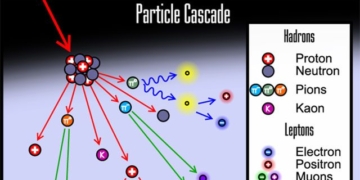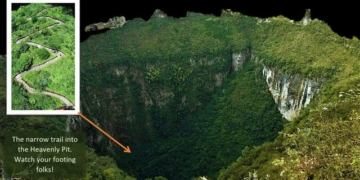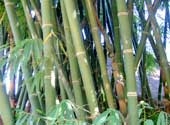The Strange Posture of a Terracotta Figure in the Tomb of Emperor Qin Shi Huang Astounds Archaeologists.
The Terracotta Army is considered a part of the mausoleum complex of Qin Shi Huang, the first emperor in Chinese history. The discovery of the Terracotta Army in March 1974 is regarded as one of the most shocking archaeological finds in the 20th century.
To date, archaeologists have uncovered over 8,000 terracotta figures within the tomb complex of Qin Shi Huang. Although made from clay and fired at low temperatures, the faces, sizes, and colors of the thousands of terracotta figures are all distinct. They appear extraordinarily lifelike, resembling a real army.
Additionally, archaeologists have found many chariots, weapons, and other artifacts in the tomb complex. These items reflect the powerful military capabilities of the Qin dynasty at the time.
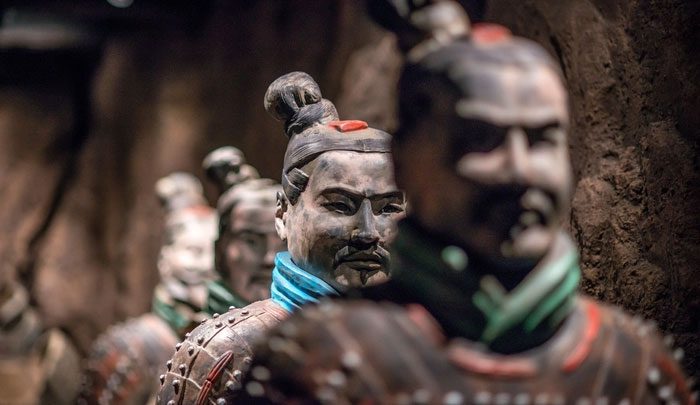
The Terracotta Army found in the tomb complex of Qin Shi Huang.
However, among the thousands of terracotta figures discovered, experts have identified a strange figure lying on its back, with bent knees, feet splayed, and arms resting on the ground. This unique figure was displayed at a museum in Xi’an, Shaanxi Province (China) to commemorate Natural and Cultural Heritage Day on June 11, 2022.
In fact, experts have found numerous standing or seated warrior figures. Yet, the figure lying on its back is “one of a kind.” According to reports from experts, the figure lying on its back was buried in a deep pit in the southeastern area of the tomb of Qin Shi Huang, covering an area of approximately 700 m2. This figure is distinct from other terracotta warriors due to its incredibly unique and unusual posture.
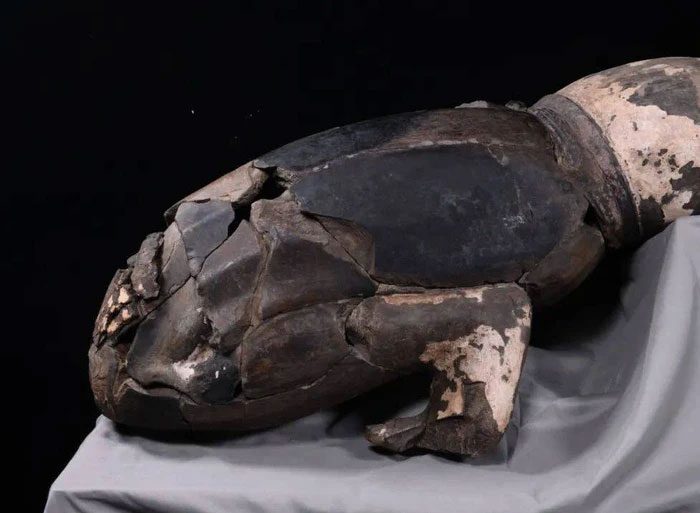
The terracotta figure in a strange lying posture in the tomb of Qin Shi Huang.
Since most of the terracotta figures in burial pits are somewhat damaged, experts have spent over 20 years restoring them. The unusual lying figure measures approximately 154 cm in length and weighs around 102 kg. As this is the only figure lying on its back, the restoration process has attracted considerable attention from experts.
One day, an archaeologist unexpectedly discovered a fingerprint on the belly of the figure. Initially, the expert thought it might be a fingerprint left by himself by accident. However, after careful observation and comparison, it turned out to be the fingerprint of an artisan from over 2,000 years ago.
Fingerprints are one of the ways that experts can confirm an individual’s identity. However, with a fingerprint from over 2,000 years ago, can experts uncover the identity of this person?
Experts indicate that, based on the fingerprint on the terracotta figure lying on its back, although they cannot definitively determine the age of the artisan, it is clear that this individual lived more than 2,000 years ago. Furthermore, based on the characteristics of the fingerprint, it can be inferred that the artisan who created this special figure was likely a teenager.
Upon conducting further research into historical records, experts discovered that at the time of constructing the tomb of Qin Shi Huang, due to a shortage of labor to create terracotta figures, many teenagers were chosen for this work. This also highlights the immense human resources required for the construction of this massive tomb over many years.
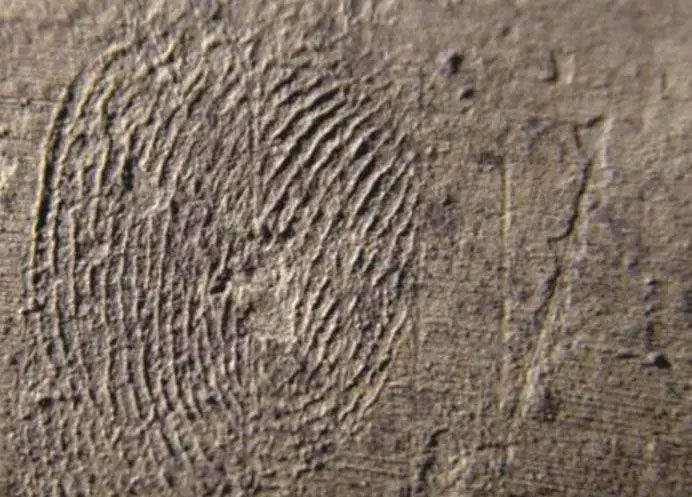
The fingerprint discovered on the body of the terracotta figure.
Although small, the fingerprint serves as a key that can help researchers unlock many doors to understanding the tomb of Qin Shi Huang.
In addition to the fingerprint, archaeologists also found traces of lacquer on the arm of the figure. These characteristics help experts gain a clearer understanding of the methods and processes used by ancient artisans working for Emperor Qin Shi Huang.
The museum in Xi’an concluded that the terracotta figure lying on its back likely depicts a tumbling performer performing acrobatics in the palace.
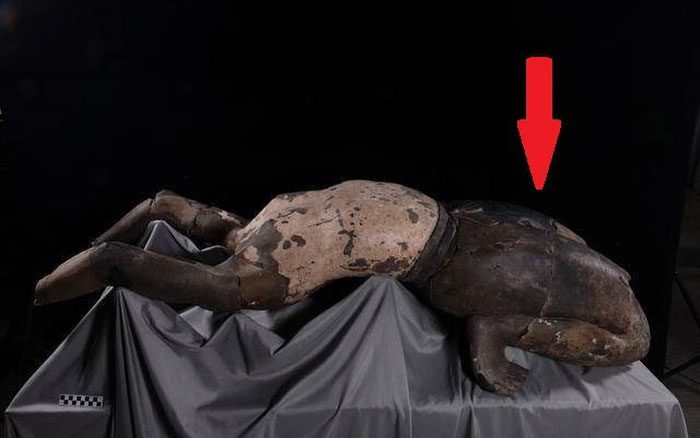
This strange terracotta figure has been concluded by experts to depict a circus performer within the palace of Emperor Qin Shi Huang.
Recently, experts have also discovered several other figures of circus performers and 15 musician figures in the excavation area. This indicates that while Qin Shi Huang brought many items, such as the Terracotta Army, war horses, and archers, to the afterlife, this famous emperor also needed moments of entertainment. This is why figures of performers appeared in this colossal tomb complex.


















































